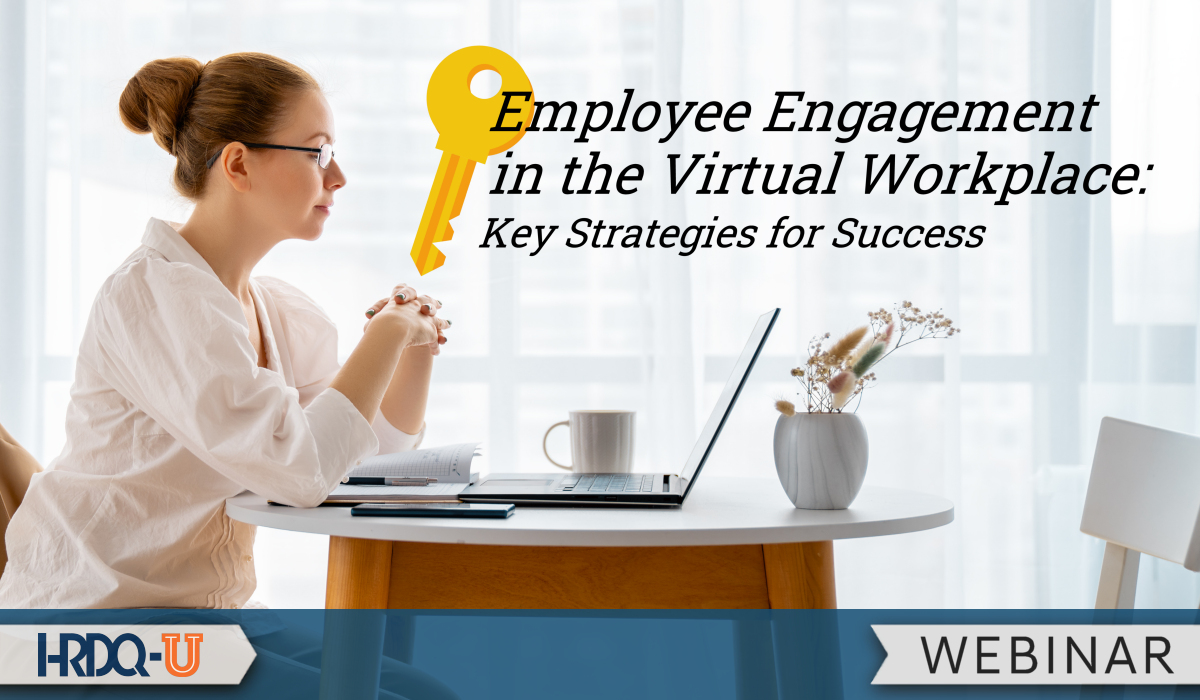
According to a recent article on Forbes.com, “Remote and hybrid work models are here to stay, and companies that adapt, innovate, and create a culture of trust and flexibility will thrive in the long run.” While that is certainly true, the list leaves out one crucial success factor: the need to implement processes and strategies that foster employee engagement. When employees are engaged, they are emotionally invested in and connected to their work. Obvious signs of engagement include a sense of pride in the work, a high level of enthusiasm, and a willingness to “go the extra mile” on behalf of the team or organization. This results in greater retention, increased job satisfaction, lower absenteeism, and better customer service.
In a remote or hybrid work arrangement, many of the traditional means of boosting employee engagement are no longer feasible. Compounding the challenge is the fact that no definitive playbook exists for engaging remote workers — every organization and team will have its own approach. The good news is that by implementing a few simple but powerful strategies, engagement can be significantly amplified among your remote/hybrid employees.
In this enlightening and fast-paced webinar, we’ll explore some of those strategies, including:
Employee engagement is more than just an HR fad—it’s something that can truly make the difference between average results and exceptional results for your team or organization. This was always true, but in a virtual or hybrid workplace, implementing strategies for employee engagement to flourish is paramount.
For managers of remote/hybrid companies; leaders looking to improve company culture; training and HR professionals; independent consultants; or any managers delivering training, this webinar will show you how!
Managing a remote workforce requires more than just smartphones, Wi-Fi, and webcams. It requires having the right employees in the right jobs with the right skills and resources. And it also requires managers with the know-how to communicate effectively, maintain a sense of community, cultivate teamwork, and develop relationships built on trust.
Managing Offsite Employees positions managers of a remote workforce for success with a half-day program packed with self-assessment exercises, real-life scenarios, practice activities, and more.
As founder and CEO of Right Chord Leadership, Dr. Michael Brenner collaborates with leaders and teams at all levels to strengthen the essential skills needed for peak performance. He achieves this by drawing on more than two decades of experience as an international leadership consultant, executive coach, keynote speaker, and educator and more than 35 years as a professional musician.
Michael has partnered with leading organizations in a variety of industries, including law firm Ballard Spahr, Morgan Properties, Burlington Stores, QVC, SAP, Penn Medicine, Children’s Hospital of Philadelphia, Boeing, and The Goddard School. He has worked with several not-for-profit organizations as well, including United Way and Habitat for Humanity.
Michael holds a doctorate in Adult Learning and Leadership from Columbia University and a master’s degree in Adult and Organizational Development from Temple University. He has taught courses in organizational behavior, systems dynamics, negotiations, and interpersonal relations at Immaculata University, Temple University, La Salle University, Penn State University, and American University.
Michael has been a featured speaker at many industry events and conferences around the world, including Southeast Asia, Canada, and Australia.
This event is sponsored by HRDQ. For 45 years, HRDQ has provided research-based, off-the-shelf soft-skills training resources for classroom, virtual, and online training. From assessments and workshops to experiential, hands-on games, HRDQ helps organizations improve performance, increase job satisfaction, and more.
Learn more at HRDQstore.com
Related HRDQ Store Product
The Supervisor’s Guide to Gaining and Sustaining Commitment
Every organization wants its employees to be engaged. Engaged workers are happier, remain with an organization for longer, and produce better work. But truly engaged employees are hard to come by. A Towers Watson Global Workforce Study found that only about one-third of the global workforce is highly engaged, leaving the remaining two-thirds less engaged or not engaged or not engaged at all.
Employee Engagement can help produce more satisfied employees. This training course introduces leaders and managers to the tools and techniques for ensuring employees feel valued and supported in their day-to-day responsibilities. The program is organized into categories such as self-assessments, interactive activities, and practical knowledge.
Empower your team and leadership with the Employee Engagement Customizable Course.

Sign up for more as a member of HRDQ-U
HRDQ-U offers much of its learning content free to visitors, including live and select webinars, blog posts, and more, with new events and posts shared every week. However, there is much more learning available. You can access our complete library of on-demand webinars and other training events and content by simply signing up.